English version was created automatically using Drupal module auto_node_translate and free DeepL translator.
Drupal 8 - installation via Composer
published on 2019-02-12
As Drupal 8 has evolved over time (various major releases), it has become the preferred way to install via Composer.
Introduction
Although Drupal 8 is still basically just a packaged archive containing a bunch of mostly PHP files that you can just unzip in some directory, this can only be recommended for some testing and playing around with Drupal. The recommended way is to install via Composer:
The recommended way to get the Drupal source code is to use Composer - a PHP dependency manager.
https://www.drupal.org/docs/8/install/step-1-get-the-code
Note: For a quick installation of Drupal 8 (along with Udemi demo for example for a quick demo) you can use the quick-start from version 8.6 onwards, see. Two new easy ways to install Drupal https://www.drupal.org/blog/drupal-8-6-0
Our development environment is any Linux environment with AMP support (Apache, MySQL and PHP). By the way, the installation pages even mention three different concurrent Drupal installations: development (dev), production (live site) and backup (working backup site).
Composer installation
Composer installation is simple and is well described directly on the project website https://getcomposer.org/download/. With maybe a little modification:
php composer-setup.php --install-dir=/usr/local/bin --filename=composer
In this case, such a manual installation is probably a better way than installing a package included in the Linux distribution.
And we have composer installed:
root@debian9:~# composer -versionDo not run Composer as root/super user! See https://getcomposer.org/root for detailsComposer version 1.8.4 2019-02-11 10:52:10
Drupal install using Composer
https://www.drupal.org/docs/develop/using-composer/using-composer-to-ma…
There are a number of ways that you could install Drupal using composer, however the recommended approach (especially for beginners to Composer) is to use the composer template at drupal-composer/drupal-project.
Before installing, I still recommend sorting out Linux permissions - composer doesn't like to run as root (https://getcomposer.org/root), so it's best to run it as another user, and the webserver accesses files and directories as the www-data user.
Another good thing is to have git installed (apt-get install git -y), this will get rid of the message
sh: 1: git: not found
So here we go:
composer create-project drupal-composer/drupal-project:8.x-dev /var/www/drupal-demo/
The installation will probably end up with some error:
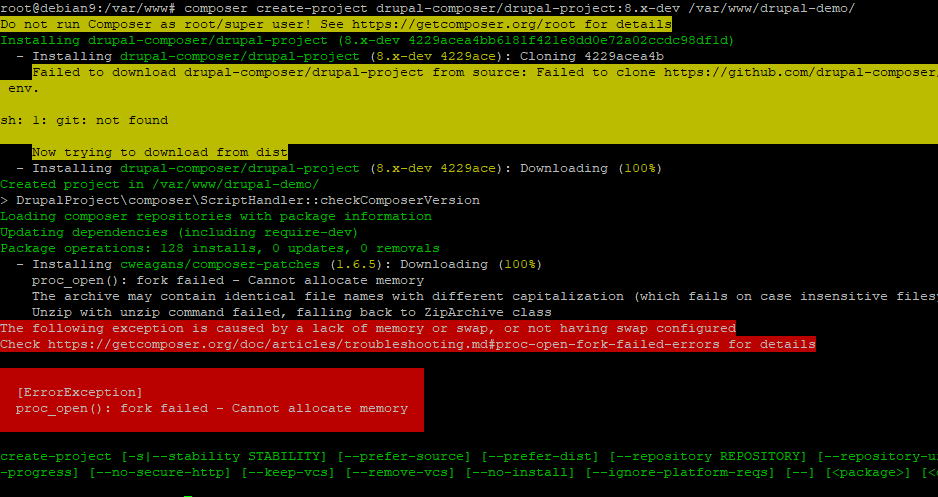
And now that we have all the problems solved, let's see the desired result:

A little bit of numbers will show us why the installation took a while (composer solved its dependencies in the process): our directory is 194M big, contains 6550 folders and 25421 files.
Let's not forget to set our webserver to the /var/www/drupal-demo/web/ folder. The permissions of the /var/www/drupal-demo/web/sites/default/files/ directory should be drwxrwxrwx, so our www-data will be able to write there as well.
Drush = a command line shell for drupal
[[img:57:small]]
Drush was and is an invaluable helper for controlling Drupal from the command line. In Drupal 7, it was the only option. For Drupal 8, there is a similar Drupal console project. Some functionality overlaps, other times one or the other does a given thing. So it's good to have both tools and know how to use them.
Installation is easy - with the above procedure, Drush is already included in our installation. It's also the only supported way to install Drush into Drupal 8: Drush 9 only supports one install method. It requires that your Drupal 8 site be built with Composer and Drush be listed as a dependency. http://docs.drush.org/en/master/install/
In order to run Drush from anywhere, we install the Drush Launcher https://github.com/drush-ops/drush-launcher. It's easy
wget -O drush.phar https://github.com/drush-ops/drush-launcher/releases/download/0.6.0/drush.pharchmod +x drush.pharmv drush.phar /usr/local/bin/drush9
Now in our installation folder, just run drush9 status
Drupal Console = The Drupal CLI. A tool to generate boilerplate code, interact with and debug Drupal
[[img:58:small]]
Similar to drush. And it is also straight installed, and like drush, it is advisable to install the launcher https://github.com/hechoendrupal/drupal-console-launcher for it.
curl https://drupalconsole.com/installer -L -o drupal.pharmv drupal.phar /usr/local/bin/drupalchmod +x /usr/local/bin/drupal
Database Installation
Now that Drupal is installed, we can prepare the database before we launch it for the first time. There's no complication here.
First Launch
And here we go. After all the peripeteia, our Drupal 8 site is ready. So let's get going.
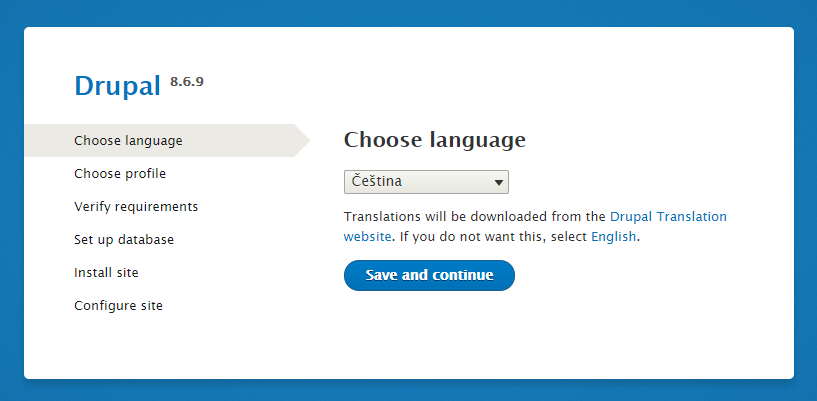
Most of the options are clear, just keep in mind when choosing a profile that minimal is already for more experienced Drupalers. The standard will install and configure unnecessary things from their point of view, which would then have to be removed anyway.
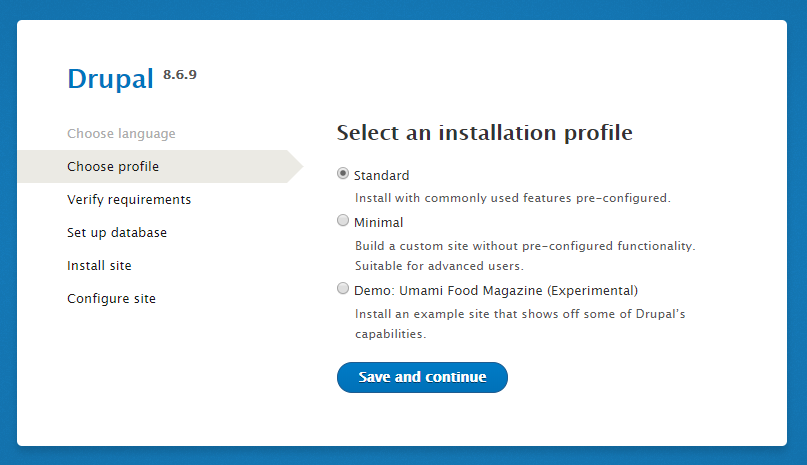
I recommend leaving the language in English, at least then the English terminology makes it easier to find solutions to problems.
One more problem needs to be solved, and it concerns permissions (composer vs apache). Details https://github.com/drupal-composer/drupal-project/issues/274
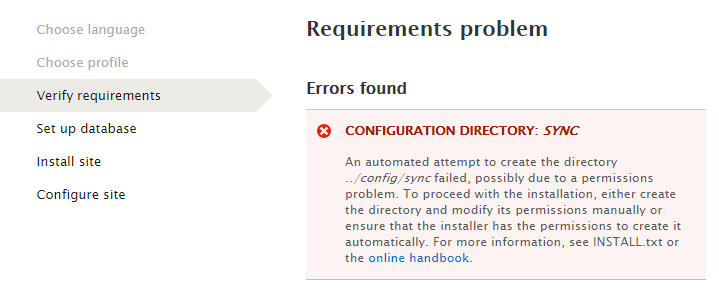
The problem is solved as follows:
mkdir /var/www/drupal-demo/configchown www-data /var/www/drupal-demo/config/
Note. According to the information in settings.php, the Drupal configuration should not be in the webserver folders.
Finally done!
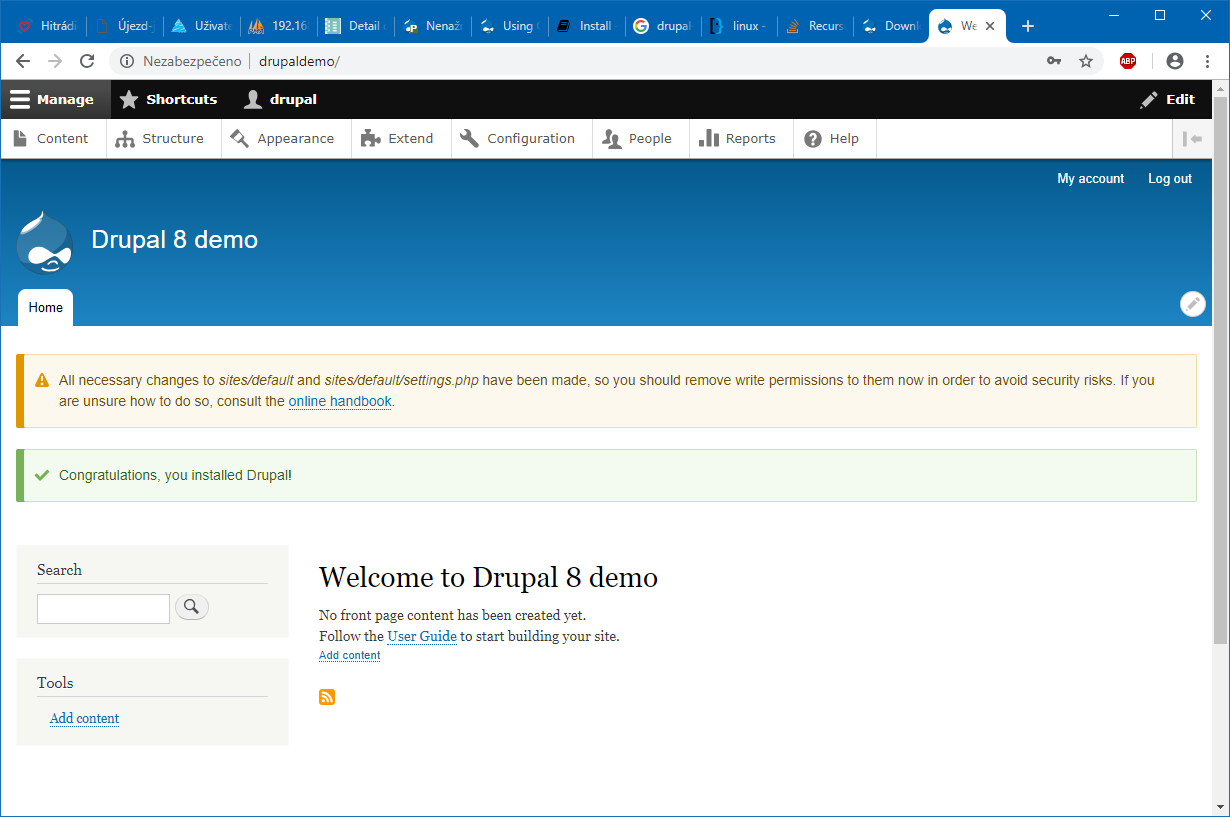
Now we will get acquainted with the modules and their settings.